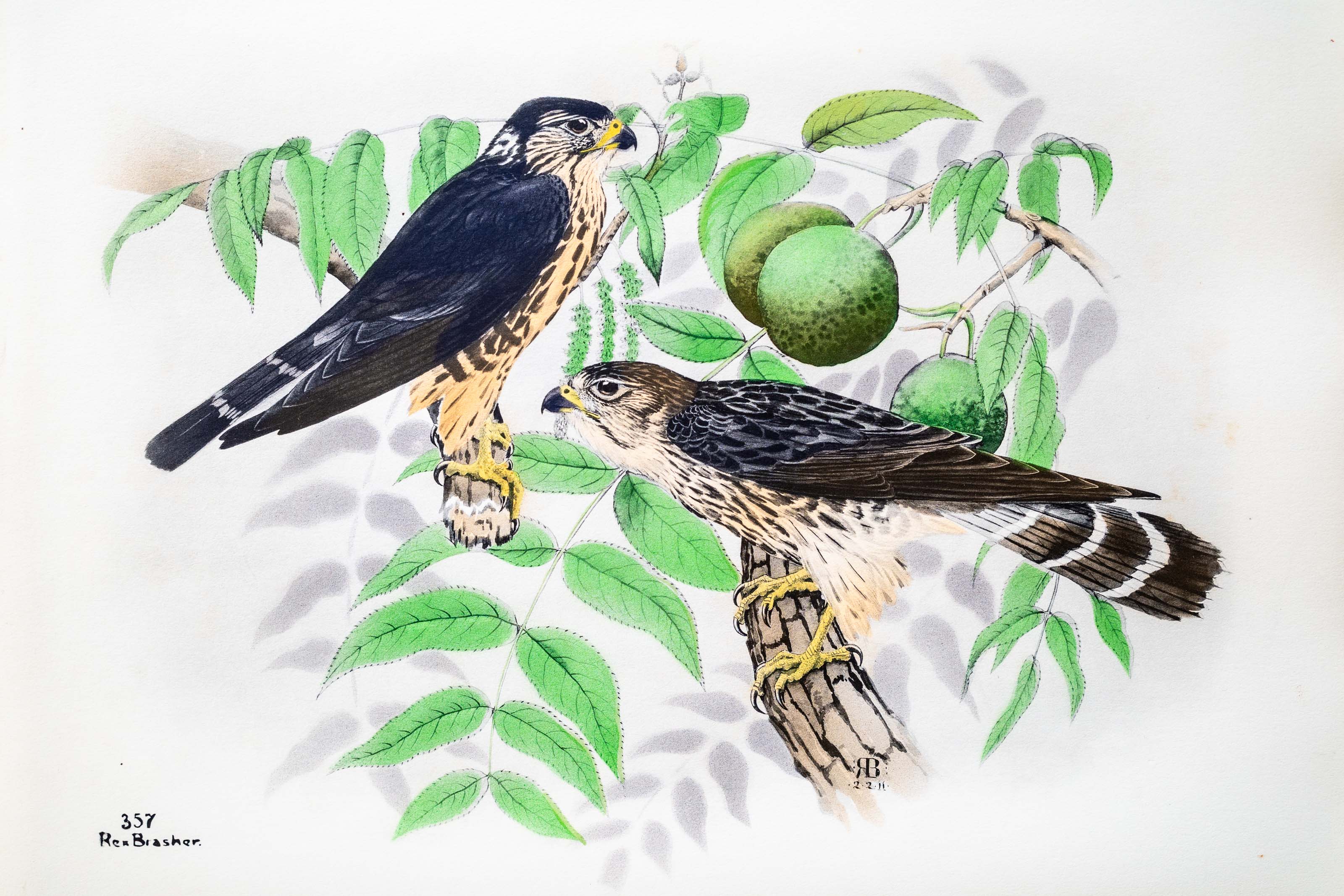
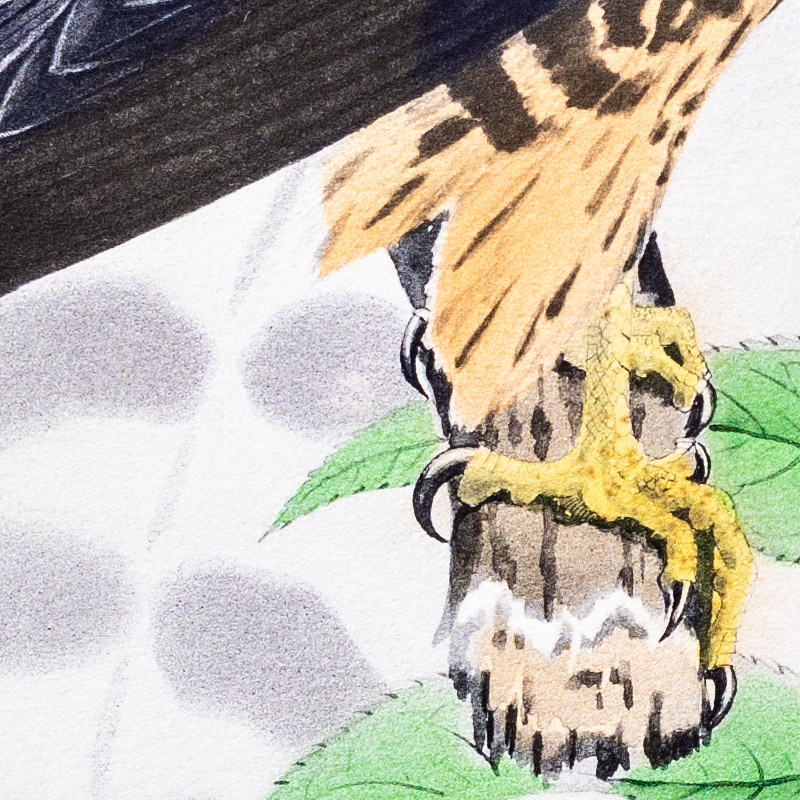
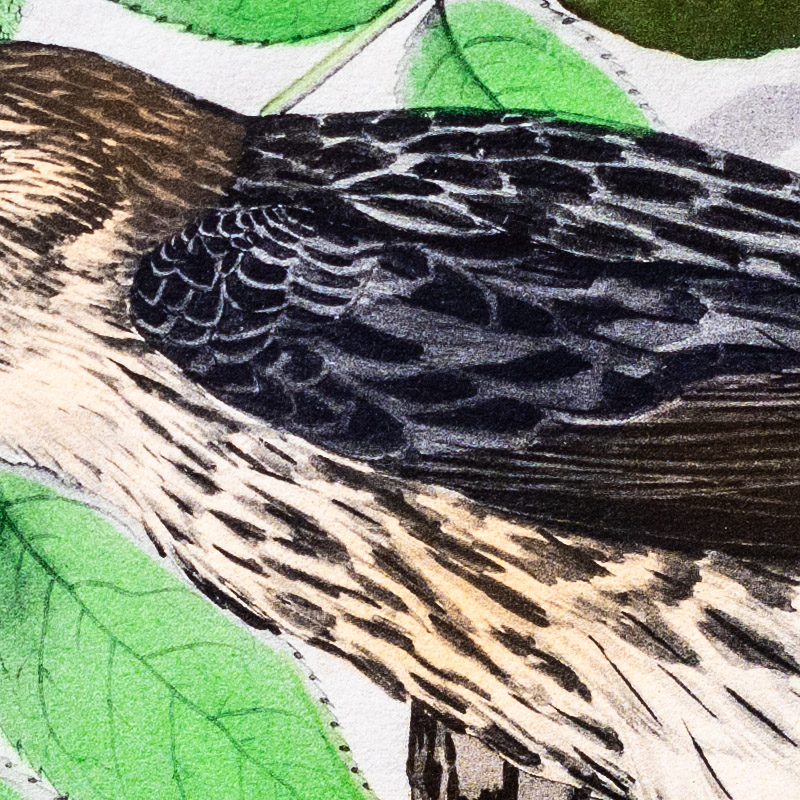
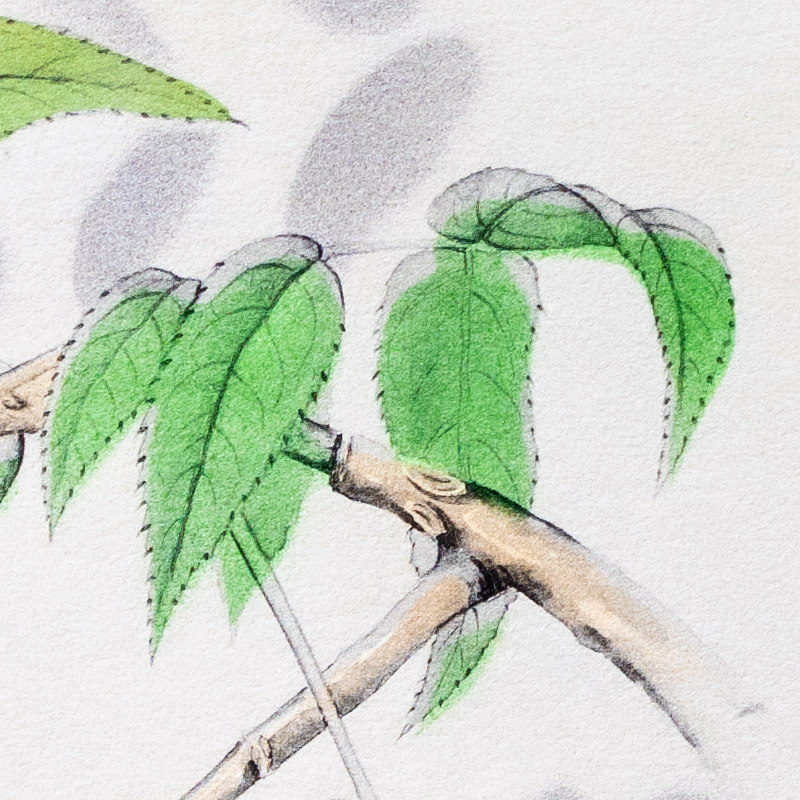
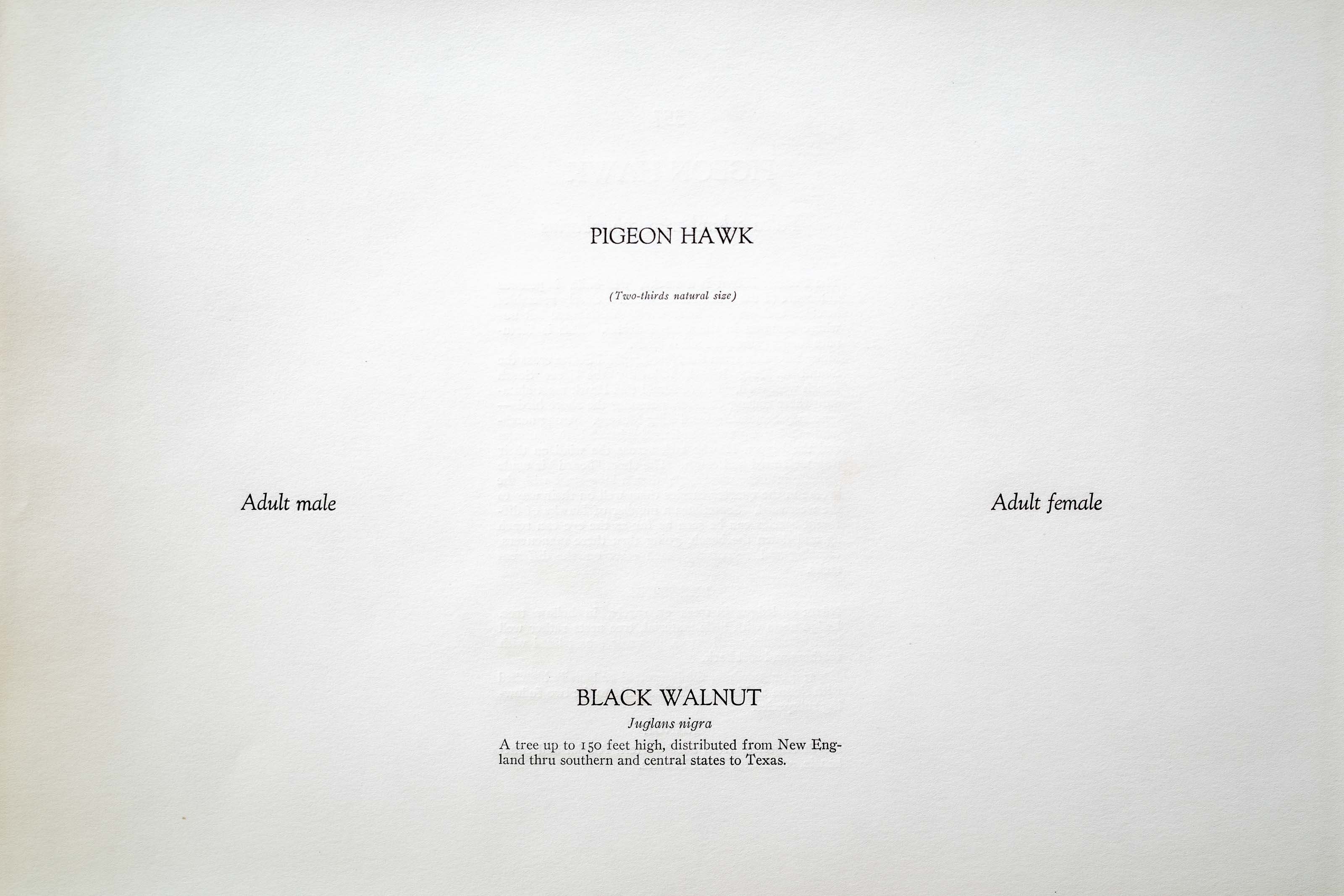


1911
1931
6
357
A team of dedicated board members, volunteers, and student interns has published every page in Volume 9. This volume includes 360 images of paintings and lyrical descriptions of birds, now available online for everyone to enjoy anywhere in the world. This is a monumental task. Each volume requires approximately 400 hours to photograph, edit, transcribe, catalog, and publish online. We need your support to complete this work.
If you're tech-savvy, have a good eye, are meticulous with details, and love structured data, please consider volunteering by emailing us at hello@rexbrasher.org.
We encourage all bird lovers and supporters to consider a monetary donation to support our mission to make Rex's work available for everyone. You can provide a one-time or recurring donation online.
The PIGEON HAWK is a stocky, well-built, impetuous. miniature of the Duck Hawk which it closely resembles in color and habits. It is widely distributed but nowhere common in the United States. This is fortunate for its principal food is birds.
Many migrants from the New England States cross the Sound to Long Island, following the Great South Beach westward. I have found this Hawk most abundant there during October, pursuing the shore birds — especially Sanderlings and Ring Plovers. Strong northwest winds are prevalent along this beach in the Autumn and the Pigeon Hawks tack across the wind on their way westward and south. The short "board" is made directly into the wind's eye, then a long slant with the breeze in the quarter carries them well on their way to the westward. Sometimes a number of Hawks of different species can be seen as far as the eye can reach up and down the beach, going thru these maneuvers, crossing and recrossing each other on the different tacks.
NEST: on ledges, in trees or, rarely, in hollow tree. Ledge nests with little material, tree nests rather well built of sticks, weed stems, grass or moss; lined with feathers and soft bark.
EGGS: 4 or 5: white, thinly spotted or heavily blotched with sienna and brown. This applies to the two following subspecies.
North America, from northwestern Alaska and Mackenzie, south over United States.
A tree up to 150 feet high, distributed from New England thru southern and central states to Texas.